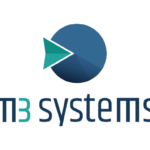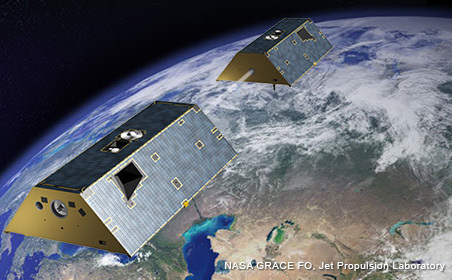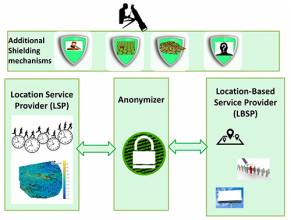The 14-year (and counting) history of Europe’s Galileo program has always made for a complex story line.
And it’s not getting any simpler.
Among the latest complications: the transition of responsibilities from the Galileo Joint Undertaking (GJU) to a new GNSS Supervisory Authority (GSA, also referred to as the Galileo Supervisory Authority), further extension of negotiations over a long-term concession contract to operate Galileo, and growing pressure from commercial companies to allow them to sell Galileo technology that they have developed or want to develop.
The 14-year (and counting) history of Europe’s Galileo program has always made for a complex story line.
And it’s not getting any simpler.
Among the latest complications: the transition of responsibilities from the Galileo Joint Undertaking (GJU) to a new GNSS Supervisory Authority (GSA, also referred to as the Galileo Supervisory Authority), further extension of negotiations over a long-term concession contract to operate Galileo, and growing pressure from commercial companies to allow them to sell Galileo technology that they have developed or want to develop.
Finally, China announced last October that it would build a full-fledged GNSS system called Compass, which would transmit signals in the L1 band where GPS and Galileo military and public safety services are located. The European Union (EU) had assiduously wooed Chinese officials and industrial leaders, signing a cooperation agreement on Galileo in 2003.
Government sources in both the United States and Europe expressed uncertainty about the ramifications of this latest development — whether it was a trial balloon, an attempt to pressure Europe into granting China access to Galileo’s encrypted publicly regulated service (PRS), or a sincere attempt to advance Chinese ambitions by creating and controlling an autonomous critical infrastructure.
They speculate that the Chinese officials and organizations involved in Galileo — such as the National Remote Sensing Center of China and China Galileo Industries — may not be closely coordinated with the military-influenced elements that are advocating Compass.
Inside GNSS explored these and other topics recently during an exclusive interview with Paul Verhoef, head of the unit in the European Commission (EC) energy & transport directorate responsible for satellite navigation (Galileo) and intelligent transport.
As is common with large-scale and long-term projects, the Galileo program has had to move the goalposts several times: completion of the 30-satellite system, originally scheduled for the end of 2008, has slipped to 2011-2, and a concession agreement once expected by late 2005 is not expected to be signed until late this year.
“People have expectations on timelines, but [reaching agreement on a concession contract] turns out to be much more complex than they thought,” says Verhoef. “We have resolved 95 percent of the issues, but of course the 5 percent remaining are the toughest ones.”
He adds, “I’ve made it clear that, although the fact of time is important for us, we’re not going to compromise because of it. We’re in the front of a contract that will last 20 years, and we’d better have it right.”
Sharing the Risks. A couple of the larger remaining obstacles involve allocating the risk of the Galileo design hand-off from the prime contractor, Galileo Industries, which is building the first phase of the ground and space infrastructure, and the yet to be approved concessionaire. The other is sizing the third-party liability risk involved in operating a GNSS and insuring against the doomsday scenario: two airliners using Galileo-based navigation systems crash over a nuclear power plant.
“How deep into the contract does liability go?” Verhoef muses. “Does it affect the shareholders [of consortium member companies]. What sort of an imposition can we make on the concessionaire to ensure that these events don’t occur? How do we incentivize the contractor to avoid these risks appearing? Of course, there are both positive and negative incentives.”
Despite the difficult-to-quantify risks and yet to be resolved sharing of those, Verhoef concludes, “We don’t see it as a showstopper.” To accommodate delays in the program, the EU Transport Council, amended regulations in mid-December on setting up and transferring oversight responsibilities from GJU to GSA, which took place in January.
The GJU goes into a liquidation phase for ninth months, keeping a skeleton staff to wind up its affairs. Research projects started by GJU have to be transferred to GSA. The EC, the EU’s executive branch, will retain responsibility for overall policy and negotiating international agreements.
GSA is gearing up and should be fully staffed by February 2007. The agency, headed by Pedro Pedreira, will take over negotiations with the industrial consortium from the GJU. Carlo des Dorides who has headed negotiations for the GJU will continue in the same role at GSA. Could a new organizational structure with new leadership produce some re-thinking and reworking of the program’s oversight and philosophy that might further slow the program?
“We see little problem there,” says Verhoef. “You put different people in that situation, and you get some different views — if only for cultural or personal differences. A fresh eye on the subject is often a good thing.”
What will not change: most of the Galileo-focused ESA and commission staff and contacts at member states will still be in place. The new personnel are, as Verhoef puts it, “embedded in an overall structure that remains the same.”
Commercial Pressures. As the Galileo system has taken more tangible, definitive form, pressure has begun to mount for allowing private companies to commercialize and sell Galileo products that they have developed.
The Galileo program issued a draft Interface Control Document (ICD) setting out the proposed technical specifications needed to receive and process Galileo signals. It also released a set of codes for some of those. Both developments have encouraged more commercial vendors to begin engineering efforts to design Galileo equipment.
Moreover, some companies have already built Galileo-capable receivers for the reference and monitoring stations, signal simulators, prototype user equipment, and other technology under contract to the European Space Agency (ESA) and the GJU. Now they want to sell similar products into a wider market, even if under license from the GJU or, now, GSA.
This increasing commercial activity, while taken as a welcome sign of industry’s interest in the program, has put public officials in a bit of a tight spot. The consortium seeking the concession contract views intellectual property rights (IPR) as a key variable in any business plan for profitably operating the Galileo system.
Verhoef says the public partners involved in the program are sympathetic to the companies’ ambitions. “We want to use this [IPRs] as a tool in the process of stimulating downstream industry. It would be absolutely stupid for us to save a few 100 million euros in the IPR and thereby end up costing the marketplace billions of euros in business. After all, the real business case isn’t in the infrastructure but in the downstream markets.”
However, Verhoef says, “We have no legal entity to provide licenses now. The GJU, GSA, the commission are discussing this subject. We have an interest in seeing the market develop, to ensure that everyone gets licenses on the same basis and in a timely fashion.”
Meanwhile, some vendors’ desire to bring products to market without authorization could get them into trouble. “A couple of fellows are pushing the boundary of reasonableness,” says Verhoef. “I hope for them that they don’t go over that boundary, because then we’d have to step in.
“Currently, consideration is being given as to whether it would be useful, advantageous, and beneficial for the GSA to give out some licenses, and then have the concessionaire take them over once the contract is in place.”
China: GNSS Dual Track. As if internal pressures of organization change and commercial ambitions weren’t enough, one of the leading regional partners whom Europe had signed up in support of Galileo — China — now is looking more like a competitor than a partner.
In commenting on the situation, Verhoef frames the issue in terms of the original motivation for the outreach initiative. “If we are going to have a commercial [GNSS] service, we need markets in the rest of the world. To ensure that, we need political acceptance that [Galileo] can operate [in other countries]. For the past couple of years, we have been attempting to develop regional partnerships without the EU ever giving up control over Galileo.”
China represents only one of those Galileo partnerships, but arguably the most strategic of them.
“We don’t see the development of other GNSS systems as a problem,” says Verhoef. However, “if you’re setting up your own full GNSS, does it make sense that you’re associated with Galileo? It’s a discussion we’ll have over the next couple of months.”
If China does build its own GNSS, Verhoef points to the need to ensure that technically the systems are interoperable. “We have the agreement with the U.S. We need a similar agreement with China. It’s not clear whether they are interested in going as far with an agreement as the United States – not just signal compatibility, but signal interoperability.”
“We still need to think this through with them,” he says. “And we expect that will be done in a good, friendly atmosphere.”




